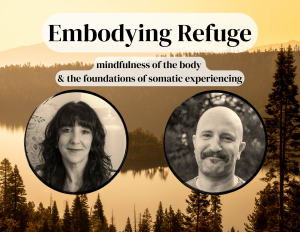Many of us are familiar with the traditional story of the Buddha and how, prior to his awakening, he renounced the life of a prince after having encountered the four messengers of aging, illness, death, and spiritual practice. The first three of these messengers inspired in the would-be Buddha a sense of spiritual urgency (samvega), and the last messenger inspired a sense of clarity (pasāda) regarding the path forward.
The renowned monk Thanissaro Bhikkhu defined samvega as being comprised of three clusters of interrelated feelings: “the oppressive sense of dismay, terror, and alienation that comes with realizing the futility and meaninglessness of life as it’s normally lived; a chastening sense of our own complicity, complacency, and foolishness in having let ourselves live so blindly; and an anxious sense of urgency in trying to find a way out of the meaningless cycle.” In other words, it is the sense of urgency that comes when we come face-to-face with the inherent unsatisfactoriness of mundane experience and the realization that we have been willing participants in the charade.
The discomfort of such urgency has the potential to lead a person toward hopelessness if not tempered with a sense of clarity about what can be done about the issue at hand. Fortunately for us, the Dhamma provides a solution, a path forward, and a reason to be hopeful. The Dhamma does not ask that we ignore nor forget the discomfort that comes with being face-to-face with life’s uncertainties and sufferings. Instead, it asks that we use the discomfort as a source of energy for practice. Thanissaro Bhikkhu has said that samvega is the “first emotion you’re supposed to bring to the training”. Why? Because it serves as the inspiration for practice. Without urgency, there is no practice.
Some of us have been orbiting the Dhamma for many years, many decades. Whether we stumbled upon the practice because of singular traumatic events, a long stretch of poor decision-making, a wake-up call after a lifetime of meaninglessness, or an ever-present sense of existential dread, a sense of urgency is what likely inspired us to practice in the first place. That sense of urgency can diminish in time, particularly if life circumstances changed significantly for the better. How, then, can we maintain a sense of urgency? What can be done to stay intimate with samvega?
This talk, which tries to address these questions, was shared with the online sangha of the Boundless Freedom Project. For those interested, the Boundless Freedom Project is an organization that focuses on sharing mindfulness and the Dharma with incarcerated people. In fact, the Boundless Freedom Project is the modern iteration of Buddhist Pathways Prison Project, the same organization that sent volunteers into Folsom State Prison, where I first sat in sangha and heard the story of the Buddha told. We meet online every Thursday evening at 6pm Pacific (here is the Zoom link).





